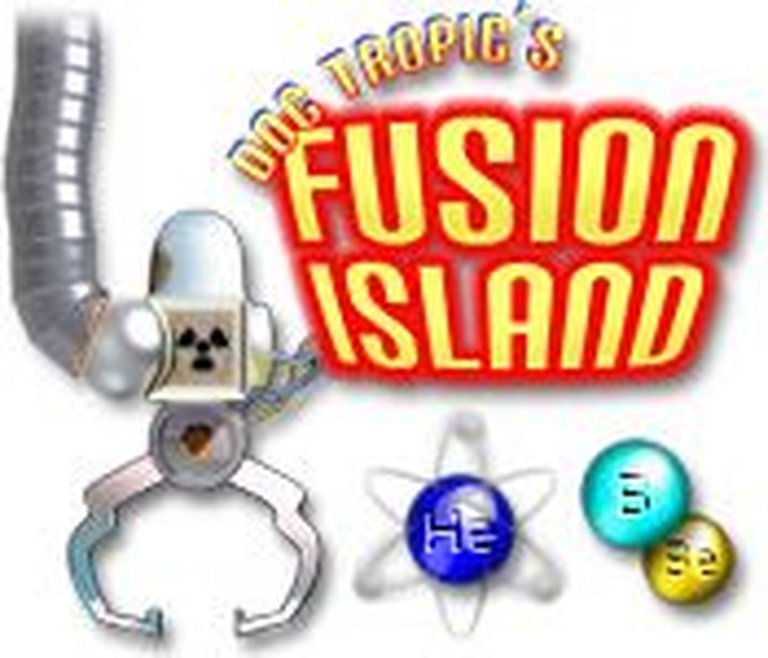- Release Year: 2006
- Platforms: iPhone, Windows
- Publisher: Big Fish Games, Inc., Big Sandwich Games Inc.
- Developer: Big Sandwich Games Inc.
- Genre: Action, Puzzle
- Perspective: Side view
- Game Mode: Single-player
- Gameplay: Arcade
- Average Score: 60/100

Description
Doc Tropic’s Fusion Island is a side‑view action‑puzzle game set on a tiny South Pacific island that powers the world through nuclear fusion. Players control Doc Tropic as they navigate 76 levels, using 3D graphics and a variety of power‑ups to defuse deadly atomic chains that threaten to explode before reaching the central reactor.
Doc Tropic’s Fusion Island: A Puzzle Masterpiece Lost to Time
Introduction
In the crowded landscape of early 2000s casual gaming, Doc Tropic’s Fusion Island (2006) emerged as a hidden gem—a puzzle game that blended scientific intrigue with addictive gameplay. Developed by Big Sandwich Games and published by Big Fish Games, this title offered a unique premise: defuse atomic chains on a tropical island where nuclear fusion reactions power the world. Despite its niche appeal, the game’s innovative mechanics and thematic depth make it a fascinating subject of study for game historians. This review will dissect its development, narrative, gameplay, and legacy, arguing that Fusion Island deserves recognition as a forgotten classic of the puzzle genre.
Development History & Context
The Studio and Its Vision
Big Sandwich Games, a small indie studio, crafted Doc Tropic’s Fusion Island during a golden age of casual gaming. The mid-2000s saw the rise of downloadable puzzle games, thanks to platforms like Big Fish Games, which catered to players seeking bite-sized, engaging experiences. The studio’s vision was to merge scientific themes with accessible gameplay, a rarity in a market dominated by match-3 titles.
Technological Constraints and the Gaming Landscape
Released in December 2006, Fusion Island arrived at a time when 3D graphics were becoming more common in casual games, but hardware limitations still required optimization. The game’s “fixed/flip-screen” perspective and 3D visuals were ambitious for the era, reflecting the studio’s attempt to push technical boundaries while maintaining accessibility. The puzzle genre was dominated by titles like Bejeweled and Zuma, but Fusion Island distinguished itself with a narrative-driven approach.
Narrative & Thematic Deep Dive
Plot and Characters
The game’s premise revolves around Doc Tropic, a brilliant but overworked nuclear physicist whose fusion experiments on a South Pacific island spiral out of control. Players must navigate the island, defusing atomic chains before they trigger a global catastrophe. The narrative is delivered through in-game text and environmental storytelling, creating a sense of urgency and scientific responsibility.
Dialogue and Themes
The dialogue is minimal but effective, emphasizing Doc Tropic’s desperation and the high stakes of his work. The game subtly explores themes of scientific ethics, environmental responsibility, and the consequences of unchecked ambition. The tropical setting contrasts with the high-stakes nuclear crisis, adding a layer of irony and tension.
Gameplay Mechanics & Systems
Core Gameplay Loop
Fusion Island is a puzzle game where players manipulate atomic chains to prevent them from reaching a reactor. The core mechanic involves rotating and aligning chains to create matches, similar to Tetris but with a unique twist. The game features 76 levels, each introducing new obstacles and power-ups.
Combat and Progression
There is no traditional combat, but the game’s challenge lies in strategic planning and quick reflexes. Players earn points based on efficiency and speed, encouraging replayability. The progression system is linear, with each level building on the last, introducing new mechanics like obstacles and time limits.
UI and Innovations
The user interface is straightforward, with a minimalist design that keeps the focus on the puzzle. The “3D graphics” were a selling point, though they were modest by today’s standards. The game’s power-ups, such as chain breakers and time extenders, add depth to the gameplay.
World-Building, Art & Sound
Setting and Atmosphere
The game’s tropical island setting is rendered in a stylized 3D aesthetic, blending vibrant colors with a sense of impending doom. The reactor core serves as a constant visual reminder of the stakes, while the island’s flora and fauna add a touch of whimsy.
Sound Design
The soundtrack is minimalistic, featuring ambient electronic music that heightens the tension. Sound effects, such as the ticking of a countdown timer and the clinking of atomic chains, enhance immersion.
Reception & Legacy
Critical and Commercial Reception
Fusion Island received limited critical attention upon release, likely due to its niche appeal. However, it garnered a cult following among puzzle enthusiasts. Its absence from major review aggregators like Metacritic suggests it flew under the radar, but its presence on platforms like Big Fish Games ensured steady sales.
Influence on Subsequent Games
While not a commercial juggernaut, Fusion Island influenced later puzzle games that blended narrative with gameplay. Its scientific theme and strategic mechanics prefigured titles like Sage Fusion and Doc Apocalypse, which expanded on its core concepts.
Conclusion
Doc Tropic’s Fusion Island is a forgotten gem that deserves reevaluation. Its blend of scientific narrative, strategic gameplay, and atmospheric design sets it apart from contemporaries. While it may not have achieved mainstream success, its innovative mechanics and thematic depth make it a noteworthy entry in puzzle game history. For historians and gamers alike, Fusion Island is a testament to the creativity of indie developers in the mid-2000s—a game that, while overlooked, remains a compelling study in design and storytelling.